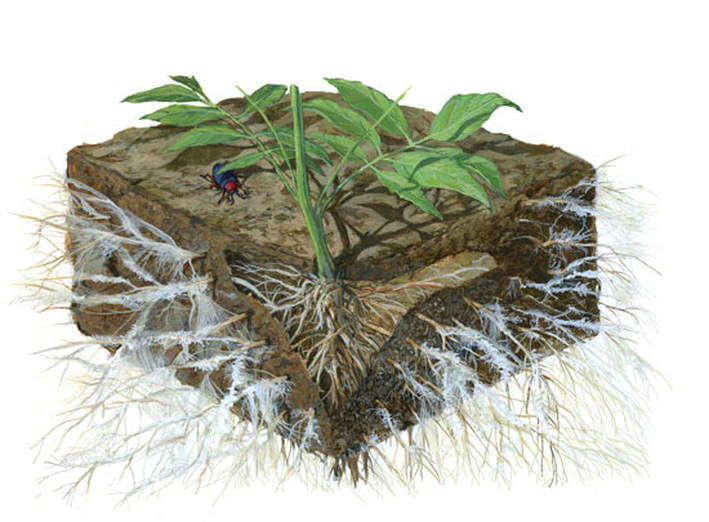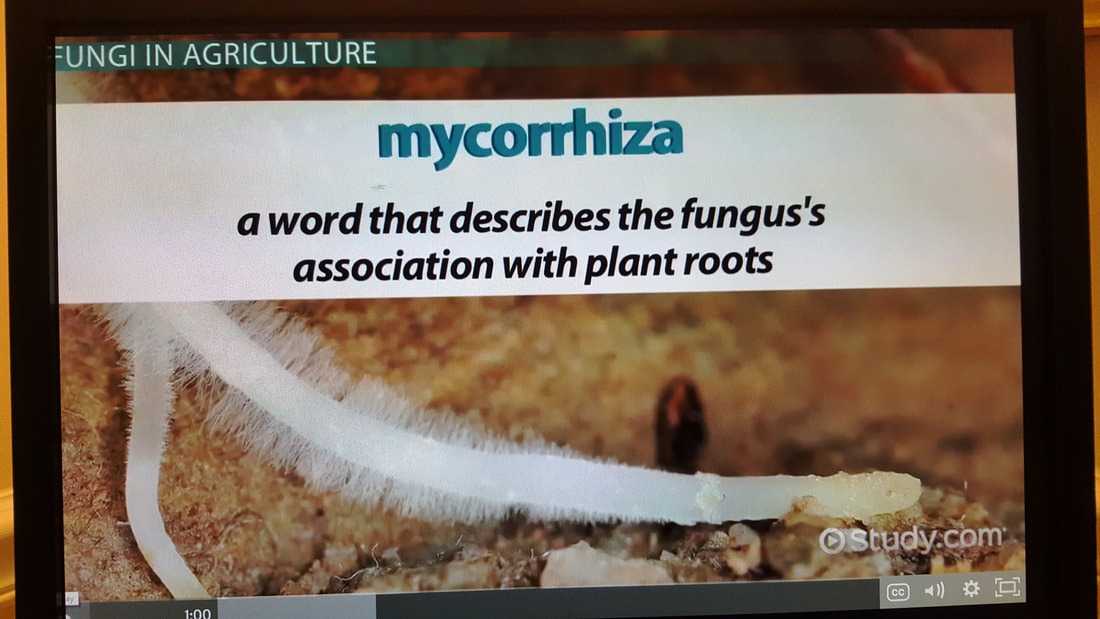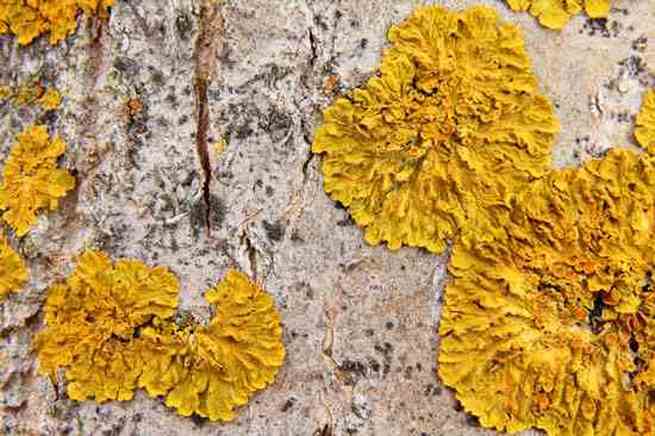|
Say it with me: my-core-rise-uh. The plural is mycorrhizae: rise-A. It’s worth remembering, because researchers discovered mycorrhizae among the roots of more and more trees, shrubs, grasses, herbs, and even non-vascular plants such as ferns and liverworts. And Mycelium refers to the global network of mycorrhizae underground. Mycorrizal fungi help plant roots absorb nutrients and fight off harmful, soil-dwelling predators. In exchange, the fungus receives sugars and nutrients from its host plant. What we call a mushroom is merely the temporary structure some fungi grow to produce spores, kind of like a seasonal flower. The main body of those species and many others typically consists of fine-branching threads known as hyphae. While you’ll sometimes see them massed together, spread like a web across decomposing wood or detritus, they are usually hidden underground and essentially invisible, for the individual filaments are only a single cell wide. The fungus’ network of hyphae is called a mycelium. We All Need Somebody to Lean On: Symbiotic RelationshipsAt least 80 percent of the plant species on the globe, representing more than 90 percent of all the plant families, are known to form mycorrhizae (fungal root relationships). In addition to facilitating the transportation of nutrients, at least one kind of mycorrhizal fungus attracts and kills the tiny soil-dwelling arthropods called springtails, a rich source of nitrogen. Other carnivorous fungi capture the superabundant microscopic worms known as nematodes, either with sticky knobs that develop from the hyphae, fine filament meshes, or loops that constrict to snare passing prey — fungal lassoes. Weird, but Yeehaw! A variety of mycorrhizal fungi protect plant associates from root-devouring nematodes by producing chemicals lethal to the worms, nematicides, which have drawn interest from the agricultural pest control industry. Many mycorrhizal fungi secrete antibiotics fatal to bacteria that infect root systems. Not surprisingly, those chemicals have generated close interest among researchers, too. The more vigorous a plant, the better it can contend with diseases and parasites, compete for space and sunlight, invest extra energy in the production of flowers or cones, successfully reproduce, and replace growth lost to insects, larger grazing animals, storm breakage and seasonal defoliation. That’s the game. Engaging in a symbiotic relationship with fungi is clearly a winning combination for plants, and the connections reach more widely than you might suppose. References:
Adapted from articles by mycologist, Paul Stamet and wildlife biologist, author, and longtime contributor to National Geographic, Douglas H. Chadwick.
0 Comments
Leave a Reply. |
AuthorTopics are researched, and compiled by Farmer Gigi Goin. Archives
November 2023
Categories |



 RSS Feed
RSS Feed